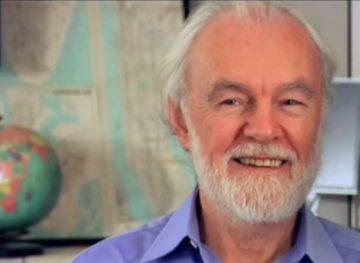David Harvey in Tribune:
 When trying to interpret, understand and analyse the daily flow of news, I tend to locate what is happening against the background of two distinctive but intersecting models of how capitalism works. The first level is a mapping of the internal contradictions of the circulation and accumulation of capital as money value flows in search of profit through the different “moments” (as Marx calls them) of production, realisation (consumption), distribution, and reinvestment. This is a model of the capitalist economy as a spiral of endless expansion and growth. It gets pretty complicated as it gets elaborated through, for example, the lenses of geopolitical rivalries, uneven geographical developments, financial institutions, state policies, technological reconfigurations and the ever-changing web of divisions of labour and of social relations. I envision this model as embedded, however, in a broader context of social reproduction (in households and communities), in an on-going and ever-evolving metabolic relation to nature (including the “second nature” of urbanisation and the built environment) and all manner of cultural, scientific (knowledge-based), religious and contingent social formations that human populations typically create across space and time. These latter “moments” incorporate the active expression of human wants, needs and desires, the lust for knowledge and meaning and the evolving quest for fulfilment against a background of changing institutional arrangements, political contestations, ideological confrontations, losses, defeats, frustrations and alienations, all worked out in a world of marked geographical, cultural, social and political diversity. This second model constitutes, as it were, my working understanding of global capitalism as a distinctive social formation, whereas the first is about the contradictions within the economic engine that powers this social formation along certain pathways of its historical and geographical evolution.
When trying to interpret, understand and analyse the daily flow of news, I tend to locate what is happening against the background of two distinctive but intersecting models of how capitalism works. The first level is a mapping of the internal contradictions of the circulation and accumulation of capital as money value flows in search of profit through the different “moments” (as Marx calls them) of production, realisation (consumption), distribution, and reinvestment. This is a model of the capitalist economy as a spiral of endless expansion and growth. It gets pretty complicated as it gets elaborated through, for example, the lenses of geopolitical rivalries, uneven geographical developments, financial institutions, state policies, technological reconfigurations and the ever-changing web of divisions of labour and of social relations. I envision this model as embedded, however, in a broader context of social reproduction (in households and communities), in an on-going and ever-evolving metabolic relation to nature (including the “second nature” of urbanisation and the built environment) and all manner of cultural, scientific (knowledge-based), religious and contingent social formations that human populations typically create across space and time. These latter “moments” incorporate the active expression of human wants, needs and desires, the lust for knowledge and meaning and the evolving quest for fulfilment against a background of changing institutional arrangements, political contestations, ideological confrontations, losses, defeats, frustrations and alienations, all worked out in a world of marked geographical, cultural, social and political diversity. This second model constitutes, as it were, my working understanding of global capitalism as a distinctive social formation, whereas the first is about the contradictions within the economic engine that powers this social formation along certain pathways of its historical and geographical evolution.
More here.
